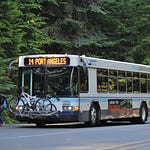While Sequim schools struggle with failing test scores and declining enrollment, the Jamestown S’Klallam Tribe is steering the curriculum toward cultural reeducation—without paying their fair share in local taxes. Is it really “equity” when academic basics are ignored, and those least invested in funding public schools have the loudest voice in shaping what our kids learn?
In 2018, the Jamestown S’Klallam Tribe gave a presentation to the Sequim School Board titled “Cultural Sensitivity.” It framed history in terms of colonizers and victims, with a heavy focus on how public institutions must transform themselves to honor tribal perspectives. Words like “healing,” “acknowledgement,” and “sovereignty” dominated the slides—not math, not reading, and certainly not science.
Fast forward to the 2023-2024 school year, and Sequim School District test scores are in the toilet. According to the Washington State Report Card, just 54% of students are on track for college-level learning without needing remedial classes in English. In math, it’s a dismal 44%. A quarter of students attend less than 90% of the days, and 15% don’t even graduate. This isn’t progress—it’s an academic crisis.
While Sequim Schools are failing to teach kids the basics, why are we prioritizing tribal cultural indoctrination over real education?
The equity shell game
The Tribe's 2018 presentation was packaged as a call for “equity,” but what it really does is divide students into identity boxes. One group is told they are historic victims; the other, historical oppressors. This is not about unity—it’s about guilt and grievance. What used to be character education is now character deconstruction.
Meanwhile, who’s actually paying the bills?
The Jamestown Tribe enjoys a range of tax exemptions—on property, fuel, tobacco, and more—thanks to its federally recognized status. Much of the Tribe’s commercial empire (casinos, medical clinics, cannabis, and now housing) exists on tax-exempt trust land. This means less revenue for local schools, fire districts, and roads. And yet, here they are, front and center, steering the educational narrative in Sequim classrooms.
A stadium renaming few can pronounce
In 2022, the Sequim School District—once again teaming up with the Jamestown S’Klallam Tribe—renamed the high school stadium Stáʔčəŋ Stadium (pronounced... well, good luck).
The Tribe says Stáʔčəŋ means “wolf”—a sacred animal symbolizing intelligence and community. But for most attendees, the name came out of nowhere. Parents, students, and alumni thought they were gathering to honor longtime superfan Myron Teterud, who devoted decades to supporting Sequim sports. Instead, they learned Myron Teterud Field would now exist inside a stadium renamed in a language hardly anyone in the stands could pronounce or recognize. (Click here for photos and video.)
What was meant to be a local tribute turned into a tribal celebration—complete with speeches, ceremonial dances, and smoke rituals. When Jamestown CEO Ron Allen was asked to say a few words, he couldn’t even remember Teterud’s name.
Ask yourself: if a third of students can’t pass basic math or reading, is this really where our priorities should be? Or is this just another example of performative politics taking center stage while academic performance continues to crumble?
Who’s accountable for results?
Education is supposed to be the great equalizer. That means giving every kid the tools to succeed—reading, writing, critical thinking, and yes, a shot at a decent career. But that requires discipline, academic rigor, and a curriculum focused on learning—not political reeducation or feel-good “cultural competency” slideshows.
Instead of pushing “equity” buzzwords and virtue signaling, maybe the district should focus on why one in four students can’t do grade-level math, and why the graduation rate is so low.
“We acknowledge the land we stand on: The Sequim School District administrative and school buildings sit on the ancestral land of the nəxʷsƛ̕ay̕əm̕ (S’Klallam) People. While the S’Klallam traditionally come from one nation, history has led to the formation of three sovereign S’Klallam/Klallam tribal governments: Lower Elwha Klallam Tribe (located in Port Angeles, WA), Jamestown S’Klallam Tribe (located in Sequim, WA), and the Port Gamble S’Klallam Tribe (located in Kingston, WA). Today, the Tribe and District share a partnership that includes official consultation on program and funding changes that may directly affect American Indian and Alaska Native students.” — Sequim School District land acknowledgement
A hijacked curriculum?
Parents should be asking: Is this curriculum truly about honoring tribal heritage—or is it about controlling the public narrative, especially when the Tribe pays relatively little into the very system it seeks to influence?
If equity is the goal, why not start by ensuring every student—regardless of race, income, or ancestry—can read a book, write an essay, and do basic math by the time they leave high school?
Reprioritizing
This isn’t about disrespecting the Tribe or erasing local history. It’s about priorities. And right now, Sequim schools are failing at the one thing they were built to do: educate children.
Let’s stop letting political agendas—and tax-free special interests—drive the curriculum while real achievement continues to collapse.
We don’t need more performative land acknowledgements. We need results.
Last Equitable Wednesday, readers were asked if they think current “equity” policies in Washington State are fair to non-tribal rural or low-income communities. Of 173 votes:
96% said, “No, some are left behind”
2% said, “Yes, the system is balanced”
2% were unsure


















